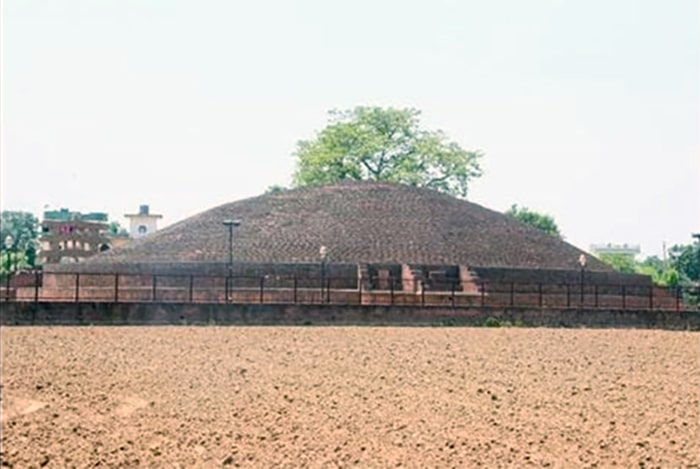By Shyamal Sinha
The historical Buddhist Stupa or brick Stupa built 2,400 years back by Mauryan king Ashoka, in Haryana’s Yamunanagar, is scheduled to get a makeover with beatification works set to begin.
The practice of building stupas spread with the Buddhist doctrine to Nepal and Tibet, Bhutan, Thailand, Burma, China and even the United States where large Buddhist communities are centered. While they have changed in form over the years, their function remains essentially unchanged. Stupas remind the Buddhist practitioner of the Buddha and his teachings almost 2,500 years after his death.
For Buddhists, building stupas also has karmic benefits. Karma, a key component in both Hinduism and Buddhism, is the energy generated by a person’s actions and the ethical consequences of those actions. Karma affects a person’s next existence or re-birth. For example, in the Avadana Sutra ten merits of building a stupa are outlined. One states that if a practitioner builds a stupa he or she will not be reborn in a remote location and will not suffer from extreme poverty. As a result, a vast number of stupas dot the countryside in Tibet (where they are called chorten) and in Burma (chedi).
The monument, spread across 100 sq-m in Chaneti village, dates back to third century BC, and is almost 8km away from the district headquarters. It is an important site of religious tourism for Buddhists around the world.
As per the department of archaeology and museum’s latest figures, the Stupa situated in the ancient city of Shrughna (modern Sugh) that lies in the jurisdiction of Amadalpur village, is among 39 state-protected monuments or sites in Haryana.
On Thursday, the cabinet minister of panchayat, archaeology and museums, Devender Singh Babli inspected the site and ordered a renovation of the place to the officials concerned.
“In view of the ever-visiting devotees from around the world, the minister ordered construction of a rest house in the village. The construction of a similar accommodation place was ordered earlier, but the work remains shut,” an official statement read.
According to the district administration’s website, to construct the Stupa, concentric layers were put one over the other, each time leaving some space on the underlying layer so that the whole structure should give a hemispherical look and four shrines in all directions near the old circumambulatory path (pradakshina path) were added during the Kushna period.
Banani Bhattacharya, deputy director of the archaeology department said this Stupa was among many places mentioned by Chinese pilgrim Yuan Chwang, in accounts of his travel.
“Following the minister’s inspection, the site will be beautified to add more plantations, availability of clean drinking water and public convenience for the visitors. We have sought an estimate from the public works department (PWD) and the work will commence soon,” she said.
This stupa clearly shows the link between his form and the body of the Buddha. The Buddha is represented at his moment of Enlightenment, when he received the knowledge of the Four Noble Truths (the dharma or law). He is making the earth touching gesture (bhumisparsamudra) and is seated in padmasan, the lotus position. He is seated in a gateway signifying a sacred space that recalls the gates on each side of monumental stupas.
From Buddhist Time. News












